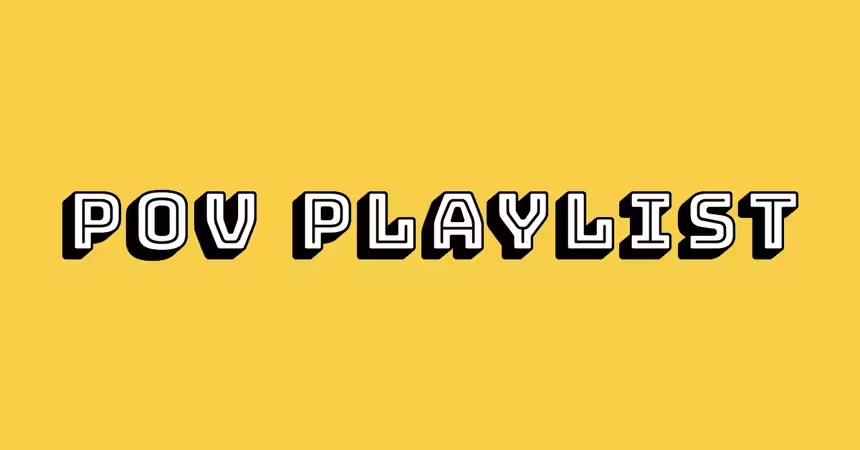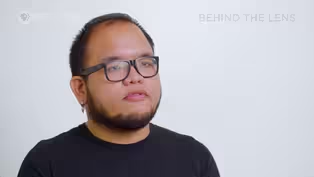
Anatomy of a Scene: unseen
Clip: Season 36 Episode 3616 | 3m 55sVideo has Closed Captions
Anatomy of a scene from "unseen" with director Set Hernandez.
Anatomy of a scene from "unseen" with director Set Hernandez.
Problems playing video? | Closed Captioning Feedback
Problems playing video? | Closed Captioning Feedback
Major funding for POV is provided by PBS, The John D. and Catherine T. MacArthur Foundation, the Wyncote Foundation, Reva & David Logan Foundation, the Open Society Foundations and the...

Anatomy of a Scene: unseen
Clip: Season 36 Episode 3616 | 3m 55sVideo has Closed Captions
Anatomy of a scene from "unseen" with director Set Hernandez.
Problems playing video? | Closed Captioning Feedback
How to Watch POV
POV is available to stream on pbs.org and the free PBS App, available on iPhone, Apple TV, Android TV, Android smartphones, Amazon Fire TV, Amazon Fire Tablet, Roku, Samsung Smart TV, and Vizio.

POV Playlist
Every two weeks, we curate a selection of POV docs, old and new, around a central theme. Stream while you can — until the next Playlist!Providing Support for PBS.org
Learn Moreabout PBS online sponsorshipMy name is Set Hernandez and I'm the director and producer of Unseen .
Unseen follows the story of my friend Pedro, who is an aspiring social worker as he navigates the uncertainties of life as an undocumented immigrant who also happens to be blind.
In essence, is a story about desire, wanting something really bad, but because of the circumstances of your life, it takes a long time and a lot of struggle to get there.
The scene that I'll talk about is the opening scene of the film The film starts with a blank screen and then very blurry out of focus footage.
The blurriness of the film is something that we put in there from the beginning in production.
It's not an after effect.
The idea with the blurred visuals of the film, is that how do we invite sighted people to watch a film not so much by using their visual sense, but rather inviting them to listen to a film and by listening, watch a film in that way.
Part of the intention also with the film is how do we introduce the circumstances of Pedro's life In a way that Pedro does not talk about it through narration, but rather showing it to audiences, In the scene, we go into a bus, Pedro sits on the bus, he is with his guide dog, Tyler.
There's a curious passenger who sits next to him and notices the dog.
And through Tyler, we get introduced to Pedro.
-I was more fond of the dog.
-[laughs] PEDRO: No, thank you.
Thank you.
Tyler, come on.
In this way, we allow Pedro to speak for himself, to show to others what the circumstances of his life are instead of didactically telling the audience.
-What kind of service does your dog do?
-He provides... he guides me.
He's a guide dog.
-Oh, okay.
So you're almost blind?
Are you blind?
-Yes, yes.
-You're blind now?
-Uh-huh.
-Wow, you got cute eyes.
That's a shame.
-Thank you.
[laughter] -I'll have a talk with Jesus about that mess.
-Thank you.
Thank you.
-He gave you cute eyes, but He won't let you see.
-Ah, it is what it is.
I feel blessed anyway.
One of the things that Pedro says in the film is how often there's this pressure to have to prove himself, to not disappoint people, being perceived as a saint, the person who's blind and undocumented, yet he is succeeding in life.
And it's so much pressure that we put on people when we expect them to be the representative of the community because they're the best, “quote unquote” you know in this community.
Ultimately, I guess one of the takeaways that we want people to also have from the film is this idea that none of us have to prove ourselves to be treated with dignity and humanity.
In essence, the film discusses disability, immigration, and mental health, but at the end of the day, our film really is about vulnerability and learning how to love yourself.
PEDRO: I cannot help to feel somewhat mad and upset just because why things have to be so hard.
I don't know if I will be able to... to bear the frustration of... of how unjust my situation is and the situation of many people.
And I hate that narrative of like the good - I'm the good immigrant.
Yes, I'm here.
I was able to make it this far, but... how many people have to sacrifice for me to get a chance?
Video has Closed Captions
Clip: S36 Ep3616 | 1m 37s | A message from the filmmaker. (1m 37s)
Providing Support for PBS.org
Learn Moreabout PBS online sponsorshipSupport for PBS provided by:
Major funding for POV is provided by PBS, The John D. and Catherine T. MacArthur Foundation, the Wyncote Foundation, Reva & David Logan Foundation, the Open Society Foundations and the...
















